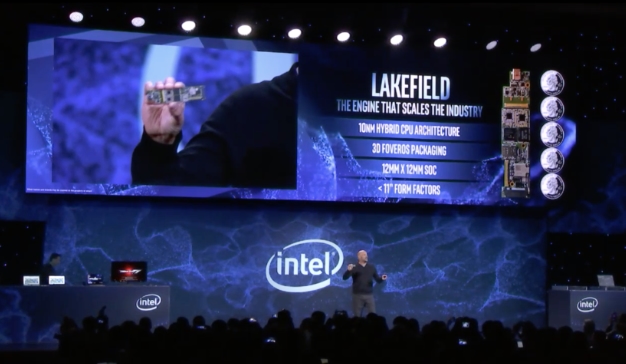Intel Shows Off 10nm Ice Lake, Confirms Systems On Track For Holiday 2019 Debut

The Ice Lake platform is highly integrated, but at its core is Intel's 10nm Sunny Cove processor microarchitecture. Also along for the ride is are all-new instructions dedicated to machine learning (DL Boost), native Thunderbolt 3 connectivity (no more need for a dedicated Intel or third-party controller), Intel's Gen 11 graphics (which can drive 4K displays) and Wi-Fi 6 connectivity (formerly known as 802.11ax).
Client Computing Group SVP Gregory Bryant and the Intel team showed off some Ice Lake prototype systems from its ODMs -- Pegatron and Wistron -- that provide all-day battery life and 4K displays (most of today's mobile devices with 4K displays rely on dedicated GPUs from NVIDIA or AMD). Intel is promising a huge leap in performance with its Gen 11 graphics, with compute performance of over 1 TFLOPs. You can read more about Intel's Gen 11 graphics in our previous piece on Sunny Cove.
Dell's Sam Byrd came out on stage to let everyone known that its engineers already have early engineering builds of its next-generation XPS devices that that will use the Ice Lake platform. Byrd was carrying around one of the prototypes that he snuck out of the lab, but he unfortunately never popped open the display lid so that we could get a closer look, nor did he flash its ports lineup.
Byrd also jumped the gun a bit and mentioned a new initiative that Intel is working on. Similar to how Intel kickstarted the "Ultrabook" movement to create thin and light notebooks, it is now backing "Project Athena".
Project Athena is dedicated to bringing consumers next generation of mobile devices. Although Bryant didn't really get into many specifics regarding Project Athena, the slide presentation touts it as "Mobile PC Innovation Rooted in Human Understanding". Cutting through the frou-frou language, this just seems as though Intel and its many partners are simply listening more to the end-user with regards to how they use their devices and what form-factors work best for them.
But that's not all; Intel is also looking to push the boundaries even further with smaller form-factors. We're talking about notebooks, tablets other dual-screen devices with 11-inch and smaller displays. The Lakefield platform leverages Intel Foveros 3D stacking of complex ICs. You can read Marco's in-depth look at Foveros here, but Lakefield will use a high-performance 10nm Sunny Cove core, which could be backed with four low-power Atom cores in a 12nm2 package. The motherboard that Bryant showed off was incredibly tiny, and is roughly the length of (and size) of five quarters placed end to end.
Needless to say, we're excited to see what Intel has in store for us at the 10nm process node and beyond. Ice Lake and Lakefield, powered by Sunny Cove, could lead to some rather interesting form-factors likely starting in 2020. However, in the near-term, Intel will be releasing over a dozen new 9th generation Core processors during the quarter ranging from Core i3 on up through Core i9. We're assuming some of those will be the high-end Core parts sans integrated graphics.





